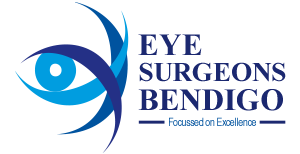This condition affects a small proportion of patients who have abnormal thyroid function, usually hyperactive thyroid (graves disease).
The mechanism is usually due to enlargement of the muscles that move the eye that reside behind the eyeball in the bony socket called the orbit. There is also an influence on the eyelid musculature that moves the upper and lower eyelids.
Additionally there are effects on the soft tissues that reside behind the eye and in the eyelids.
COMPLICATIONS
- Double vision (diplopia). The abnormal thyroid status alters the eye muscles that move the eye.
- Proptosis (bulgy eye). Due to swelling of the muscles around the eye and of the fatty tissues around the eye.
- Lid retraction. Due to excessive stimulation of a muscle in the upper lid by thyroid hormone.
- Optic nerve compression. This is serious and potentially blinding. It is very rare. If you notice blur that is new or greying of vision or loss of colour in your vision (different to the other eye), you need to report this urgently.
- Glaucoma. Raised pressure in the eye, which, if not treated, can after some years damage the vision.
- Corneal Exposure and ulceration. Due to the eye lids not closing properly and resulting in a drying of this structure.
Usual Expectations is that most cases of thyroid eye disease get worse over a year or two (or three) and then stabilise. A small number of cases can improve and a very small number improve dramatically. It is uncertain what effect thyroid function control has on the progress of the eye disease, but most doctors believe that it is important to have good control with blood tests etc.
Treatment
- Double vision. This is initially treated with prisms that are ground into the spectacles or stuck onto the surface of spectacles (Fresnel prism).
- Proptosis. The best treatment for this is surgery. Oral steroids are sometimes used whilst waiting for surgery.
- Eyelid retraction. Various drops are used to help irritation. Sometimes Botox is used. Eventually when everything is stable eyelid surgery may be required and the results are usually excellent.
- Optic nerve compression. This is usually treated with surgery though steroids can sometimes be used whilst waiting for surgery.
- Glaucoma. Eye drops are used. Sometimes surgery is performed to the eye muscles if the tightness of these muscles has produced the glaucoma.

